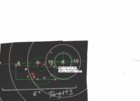Annealing with the AMP is so fast and easy I see no point in NOT doing it, just in case that consistent neck tension might make a difference during a match where the conditions are excellent.
perhaps for some of us that 1500 dollars could go toward a new barrel, gun etc and lots of powder and bullets. If my vertical spreads are good that tells me my ammo is fine, I might be a novice but that is just common sense
would a 1500 dollar annealing machine helped this target ? Probably not but some wind reading skill on my part sure would have
Attachments
Last edited:












